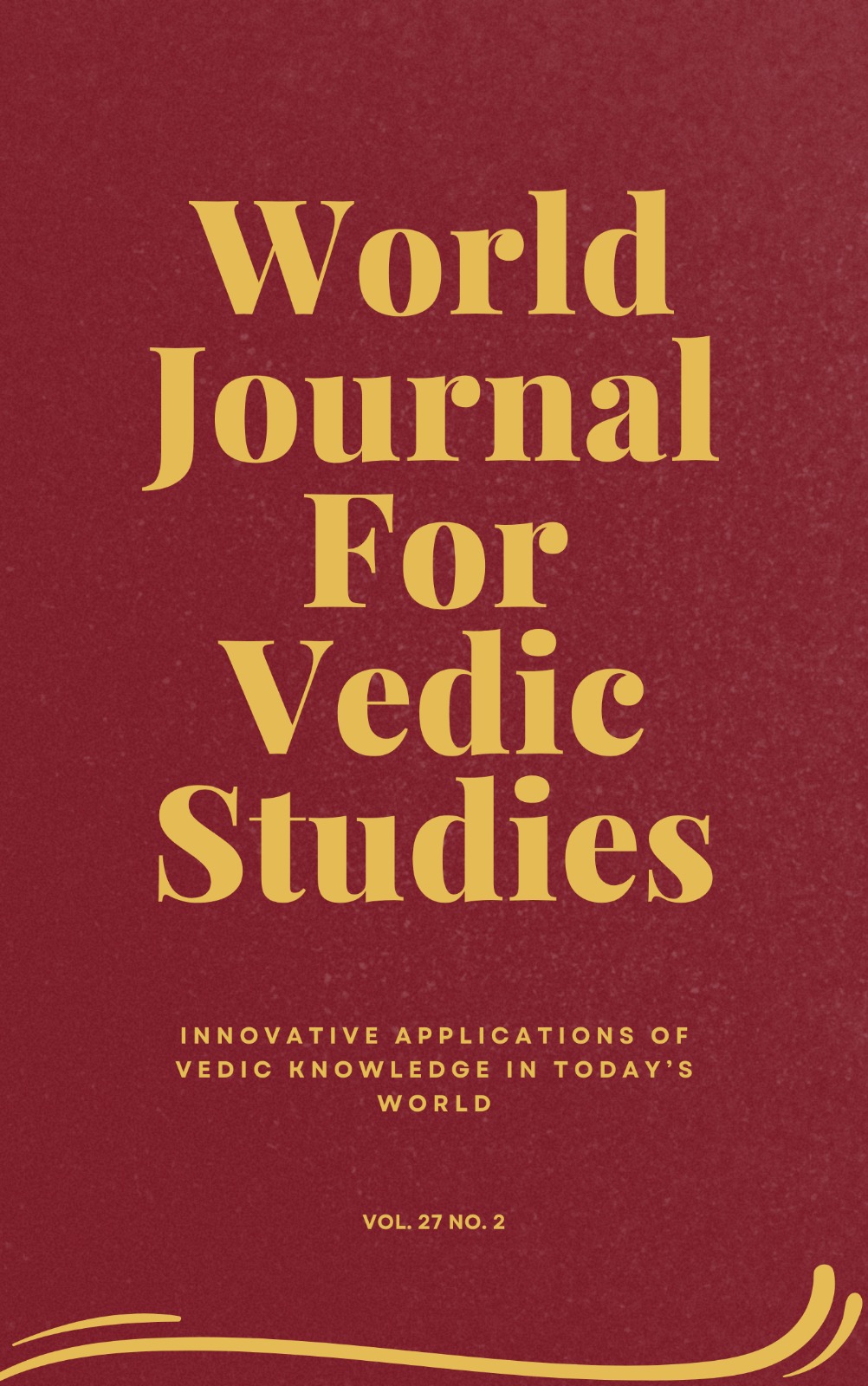Vedic Knowledge Applied in Modern World
Main Article Content
Abstract
The Veda has been defined as Mantras (i.e. the 4 Vedic Saṃhitās) and Brāhmaṇas (which include Araṇyakas and Upaniṣads). These have 2 broad aspects: the religious and irtualistic side and the esoteric import, the philosophical and spiritual.The spiritual aspect is Ethics, i.e. dharma and adharma, and the means for the realisation of man’s transcendental aim. The latter was never very popular: few showed interest. The religious and ritualistic aspect declined with the rise of Buddhism and Jainism. It declined further with the invasion of foreign tribes and especially with the conquest of Northern India by the Moghuls (12th century). Meanwhile had arisen the Purāṇas and Tantras and Bhakti cults. But at all times the Veda (=Mantras and Brāhmaṇas) remained authoritative.There have been many academic studies on both aspects of the Veda – the ritualistic and the spiritual – editions hermeneutics, historical developments, comparisons etc. etc. But dharma/adharma and the quest for self-realisation is not a theoretical, academic pursuit only. It has a really practical aspect. The RV 6.9.4-6 says there is an immortal light set in the heart of mortals. Taittirīya Upanishad 3.1 enjoins “Seek to know that from which all beings are born, that is brahman.” Is this true? Do we believe it? If so, should we not also turn to this realisation. Vedic knowledge and Vedic scholarship should, I firmly believe, include this practical spiritual investigation and the ethical aspect of dharma should be taught early to young children as Shrīmad Bhāgavatam advises in 7.6.1.

